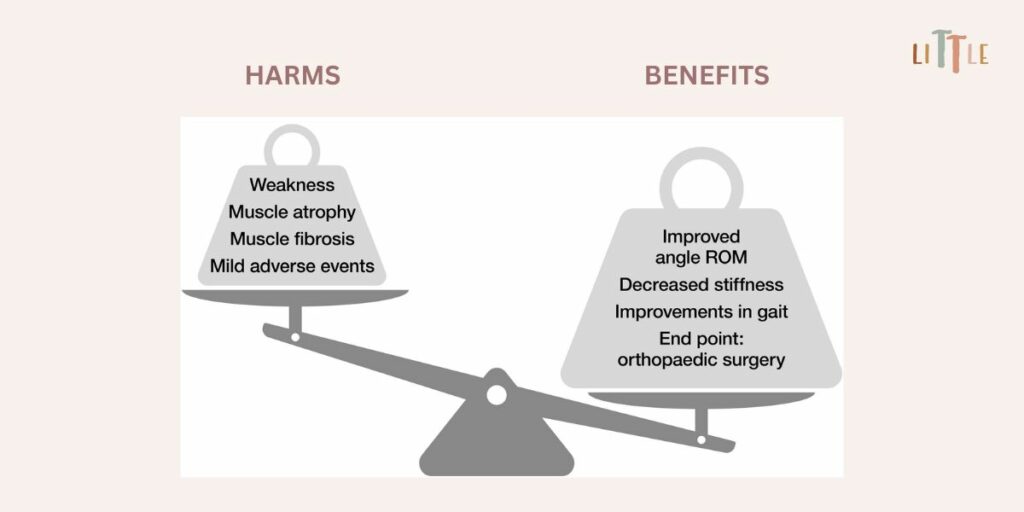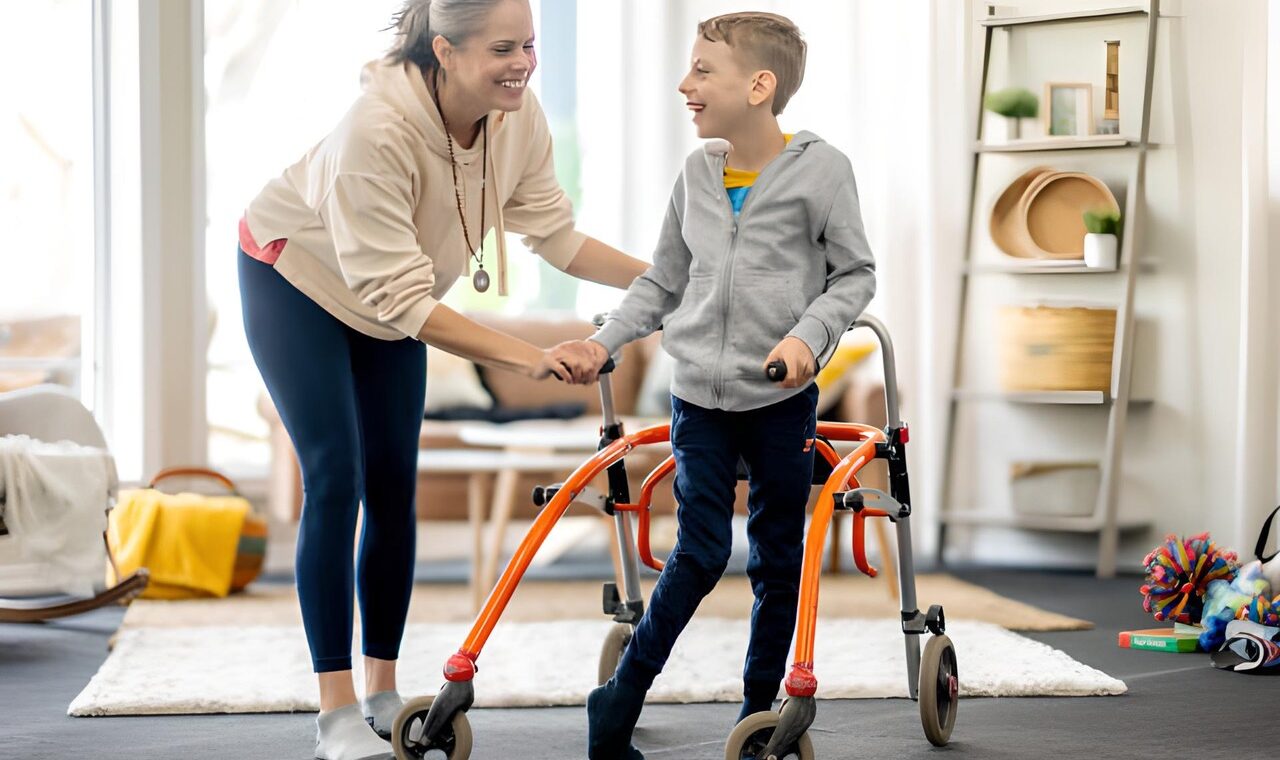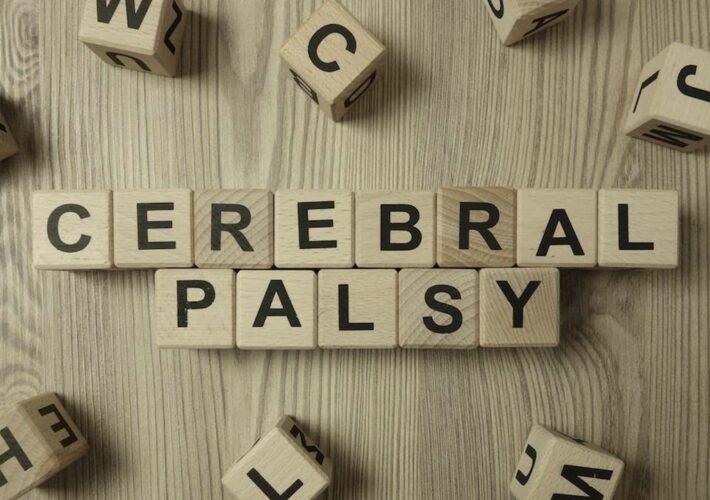Are your child’s muscles too tight and stiff, making it difficult for him to move and do the things he wants to do? Have you heard of botulinum toxin treatment but are wondering how it works, how long the effects last, and are there any side effects or risks associated with botulinum toxin? Then read the following article and find out!
TL;DR – the highlights:
- botulinum toxin helps your child’s muscles relax and become more flexible, which can help them participate in physical therapy and learn new movements more easily
- it’s important to know that botulinum toxin is not a permanent fix, its effects are temporary, but can last for a few months
- based on child’s needs and goals, the doctor will determine which muscles need injections
- botulinum toxin is just one part of a bigger treatment plan, it works best in combination with other therapies such as physical and occupational therapy
What is botulinum toxin and how does it work?
Imagine your muscles are like rubber bands. When you have cerebral palsy (CP), some of these muscles can become too tight and stiff. This is called muscle spasticity and can make it difficult for your child to move or do the things they want to do.
Botulinum toxin (BTX), or Botox for short, is a drug that can help with muscle spasticity. It’s like a little superhero that can relax those tight muscles. But how does it work? Well, botulinum toxin actually blocks signals between nerves and muscles. It’s like giving your nerves a temporary “Do Not Disturb” sign, so they can’t tell the muscles to be too tight. It causes temporary muscle paralysis by binding to synaptic proteins at neuromuscular junctions, thus preventing the junctions from releasing acetylcholine.1 This binding is irreversible, and the peripheral nerve must sprout a new fiber to form a new neuromuscular junction.2,3 This process takes about 3 to 4 months.1
When botulinum toxin is injected into specific muscles that are causing trouble, it starts to take action. It helps loosen these muscles and relieve stiffness. This can make it easier for your child to move their arms, legs, or other body parts, and can also help them with their balance and coordination.
What are the potential benefits of botulinum toxin treatment?
Botulinum toxin may have some potential benefits for children with CP. Let’s take a look at some of them:
- Reduce muscle stiffness: One of the main benefits of botulinum toxin is its ability to relax tight and stiff muscles. When the drug is injected into the specific muscles that cause spasticity, it helps relax those muscles. So, the baby’s movements can be smoother and easier.
- Improved range of motion: Botulinum toxin can also help improve your child’s range of motion by reducing muscle stiffness. This allows the joints to move more freely and with less resistance. This means your child will be able to stretch and move their arms and legs more, making it easier to carry out daily activities and participate in therapy.
- Improved motor control: Whit reduced spasticity, your child will be able to control his movements more easily. Botulinum toxin can help improve their motor control, allowing for more precise and coordinated movements. This can have a positive effect on their ability to walk, use their hands, sit upright, and perform other functional tasks.
- Facilitate therapy progress: Botulinum toxin treatment can be a useful tool in combination with therapy. Reducing muscle stiffness and improving motor control creates a “window of opportunity” for your child to participate more effectively in therapeutic exercises. With less spasticity, they may be able to learn new movements, strengthen their muscles, and progress more easily during therapy sessions.
- Improved quality of life: Ultimately, the goal of botulinum toxin treatment is to improve your child’s overall quality of life. By reducing muscle stiffness and improving movement, daily activities become more manageable and enjoyable. Your child may become more independent, participate better in social and recreational activities, and gain confidence in their abilities.
Most studies support the concept that by controlling spasticity, botulinum toxin improves joint range of motion, function, and gait pattern in children with CP. Furthermore, some authors suggest that botulinum toxin may actually reduce or delay the need for orthopedic surgery.4
It’s important to note that specific benefits may vary depending on your child’s individual condition and treatment plan. The effects of botulinum toxin are temporary, usually lasting for a few months. However, repeated injections can be considered to maintain the benefits for a longer period of time.
NOTE: Botulinum toxin should be used with caution due to lack of evidence of long-term effects. Recent studies have questioned the effects of botulinum toxin on passive range of motion, gait kinematic, and general transfer to functional abilities. Some evidence suggests that muscle injected with botulinum toxin lose their contractile elements, which are replaced by fat and connective tissue, making the muscles weaker and stiffer.5 More studies need to be done to determine both short-term and long-term benefits of using botulinum toxin, as well as the potential damage to muscles.
How long do the effects of botulinum toxin last?
The duration of the effects of botulinum toxin can vary from child to child and depends on several factors, including the specific muscles being treated and the individual’s response to the drug. In general, the effects of botulinum toxin injections usually last for several months.
On average, we can see the first effects of botulinum toxin within a week or two after the injection.6 During this time, the drug begins to relax the targeted muscles, reducing spasticity and improving range of motion. Your child may be able to move more easily, have better motor control and reduced muscle stiffness.
Over time, the effects of botulinum toxin gradually wear off as the drug is naturally metabolized by the body. In general, the duration of benefits can last from three to six months.6 However, it’s important to note that this time frame can vary from person to person. Some children may experience shorter or longer lasting effects depending on their specific circumstances. As the effects of the botulinum toxin begin to wear off, your child’s muscle spasticity may gradually return. Therefore, regular check-ups with a doctor are essential.
Are there any side effects or risks associated with botulinum toxin?
When it comes to the safety of botulinum toxin injections in children with CP, it’s important to understand that while it’s generally considered safe, there are potential side effects and risks to be aware of. Below are some of the most common considerations:
- Side effects: After botulinum toxin injection, some children may experience mild, mostly temporary side effects. These may include pain or discomfort at the injection site, bruising, redness, or swelling. In rare cases, children may also experience headaches, flu-like symptoms, or even a mild fever.
- Allergic reactions: Although uncommon, allergic reactions to botulinum toxin can occur. Signs of an allergic reaction may include itching, rashes, hives, difficulty breathing, or swelling of the face, lips, tongue, or throat. If any of these symptoms occur, it’s important to see a doctor immediately.
- Muscle weakness: Botulinum toxin acts as a temporary muscle relaxant, and in some cases can cause temporary weakness of the treated muscles. This can affect the child’s ability to move or perform certain tasks. However, weakened muscles usually regain strength once the effects of the botulinum toxin wear off.
- Spread of effect: Rarely, the effects of botulinum toxin can spread beyond the intended injection site to nearby muscles. This can lead to unintended muscle weakness or other effects. It’s important that the doctor considers the dose carefully to minimize the risk of spread.
- Long-term side effects: Although botulinum toxin has been used for many years, its long-term effects are still being studied. There is currently no clear evidence that the use of botulinum toxin in children with CP can cause significant long-term side effects. However, it’s important to follow your doctor’s instructions and report any concerns or changes in your child’s condition.

It’s important to note that the safety of botulinum toxin injections is closely monitored, and healthcare professionals take precautions to minimize risk. Before treatment, your child’s doctor will evaluate your child’s medical history, perform a thorough examination, and discuss the potential risks and benefits of this procedure.
What are the expected outcomes?
When considering the expected outcomes of botulinum toxin treatment in children with CP, it’s important to understand that specific outcomes may vary depending on each child’s unique condition and treatment plan. However, here are some general results and how the use of botulinum toxin can complement other therapies, such as physical therapy:
1. Reduced muscle spasticity
One of the main goals of botulinum toxin treatment is to reduce muscle spasticity. By targeting and relaxing specific muscles that are too tight or stiff, botulinum toxin can help improve a child’s range of motion and reduce muscle resistance during movement. This reduction in spasticity can lead to greater comfort, easier movements, improved overall mobility, and even improved tolerance to orthotics.5
2. Improved motor control and coordination
Treatment with botulinum toxin can contribute to improved motor control and coordination. By reducing spasticity, children can more easily initiate and control their movements, which can lead to improved balance, posture, and coordination. This can have a positive impact on their ability to perform daily activities, such as walking, reaching, and grasping objects.
3. Increased participation in therapy
Botulinum toxin injections can create a window of opportunity for therapy. By temporarily reducing muscle spasticity, botulinum toxin can help a child become more involved in and benefit from other therapies, such as physical therapy. Reducing spasticity can make it easier for children to practice movements, learn new skills, and strengthen muscles during therapy sessions. This can facilitate progress and increase the effectiveness of their overall therapy program.
4. Improved functional abilities
A combination of botulinum toxin treatment and physical therapy can lead to improvements in a child’s functional abilities. Reducing spasticity and improving motor control can improve mobility, increase independence in daily activities, and improve overall quality of life. These improvements may include more efficient walking, using their hands more effectively, more stable sitting, and easier participation in age-appropriate activities.
5. Individualized approach to treatment
Botulinum toxin treatment and physical therapy can be tailored to each child’s specific needs and goals. The healthcare team, including a physical therapist, works together to create an individualized treatment plan that takes into account the child’s unique challenges, strengths, and functional goals. Botulinum toxin injections can help target specific muscle groups and patterns of spasticity, while physical therapy can focus on strengthening, coordination, and functional abilities.
It’s important to note that we often achieve the best results when we integrate botulinum toxin treatment with a comprehensive treatment plan that includes ongoing physical therapy. The combined efforts can maximize the benefits of reduced spasticity, promote motor development, and support your child’s long-term progress.
Remember that the duration of the effects of botulinum toxin is temporary and works best in combination with other therapies like physical therapy, occupational therapy, or orthotic management. The goal is to maximize your child’s functional abilities and help them achieve their goals in the long term.
REFERENCES:
- Miller F. Cerebral palsy. Springer-Verlag, Inc; 2005
- Sutherland DH, Kaufman KR, Wyatt MT, Chambers HG. Injection of botulinum A toxin into the gastrocnemius muscle of patients with cerebral palsy: a 3-dimensional motion analysis study. Gait Posture. 1996; 4:169-79. doi: https://doi.org/10.1016/0966-6362(95)01054-8
- Fragala MA, O’Neil ME, Russo KJ, Dumas HM. Impairment, disability, and satisfaction outcomes after lower-extremity botulinum toxin a injections for children with cerebral palsy. Pediatr Phys Ther. 2002 Fall;14(3):132-44. doi: 10.1097/00001577-200214030-00003
- Desloovere K, Molenaers G, De Cat J, Pauwels P, Van Campenhout A, Ortibus E, Fabry G, De Cock P. Motor function following multilevel botulinum toxin type A treatment in children with cerebral palsy. Dev Med Child Neurol. 2007 Jan;49(1):56-61. doi: 10.1017/s001216220700014x.x
- Multani I, Manji J, Hastings-Ison T, Khot A, Graham K. Botulinum Toxin in the Management of Children with Cerebral Palsy. Paediatr Drugs. 2019 Aug;21(4):261-281. doi: 10.1007/s40272-019-00344-8
- Gooch JL, Patton CP. Combining botulinum toxin and phenol to manage spasticity in children. Arch Phys Med Rehabil. 2004 Jul;85(7):1121-4. doi: 10.1016/j.apmr.2003.09.032




